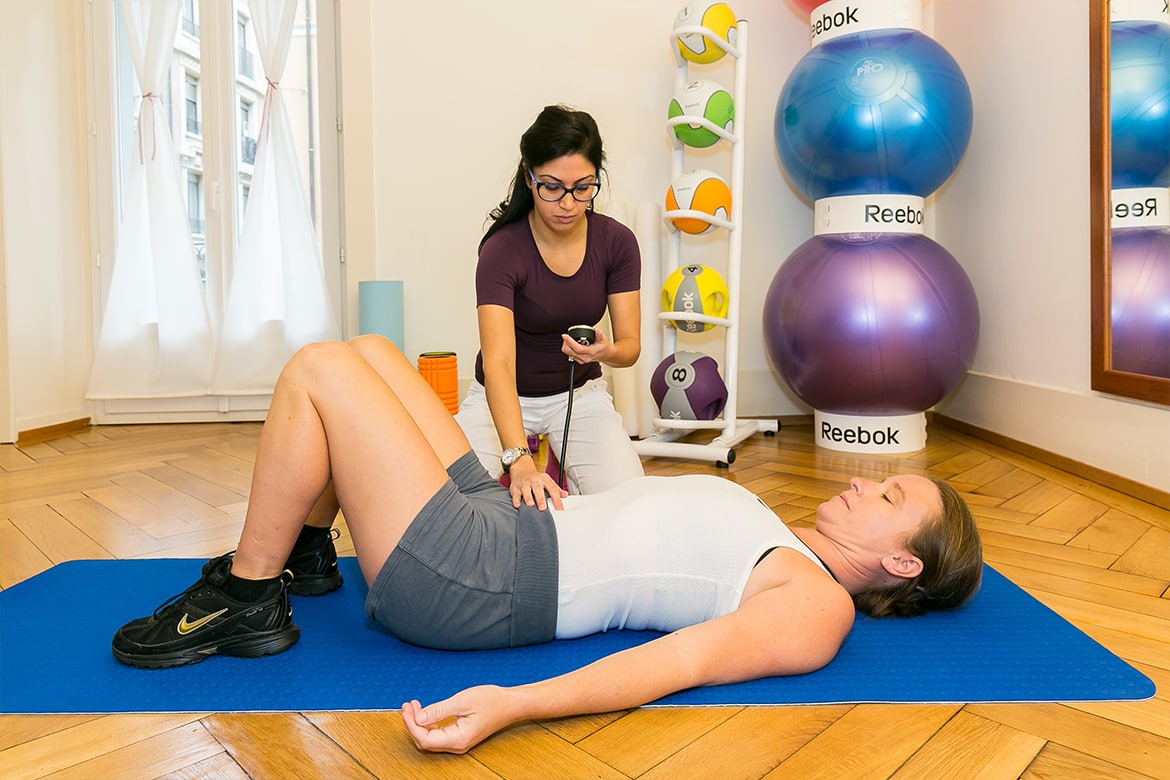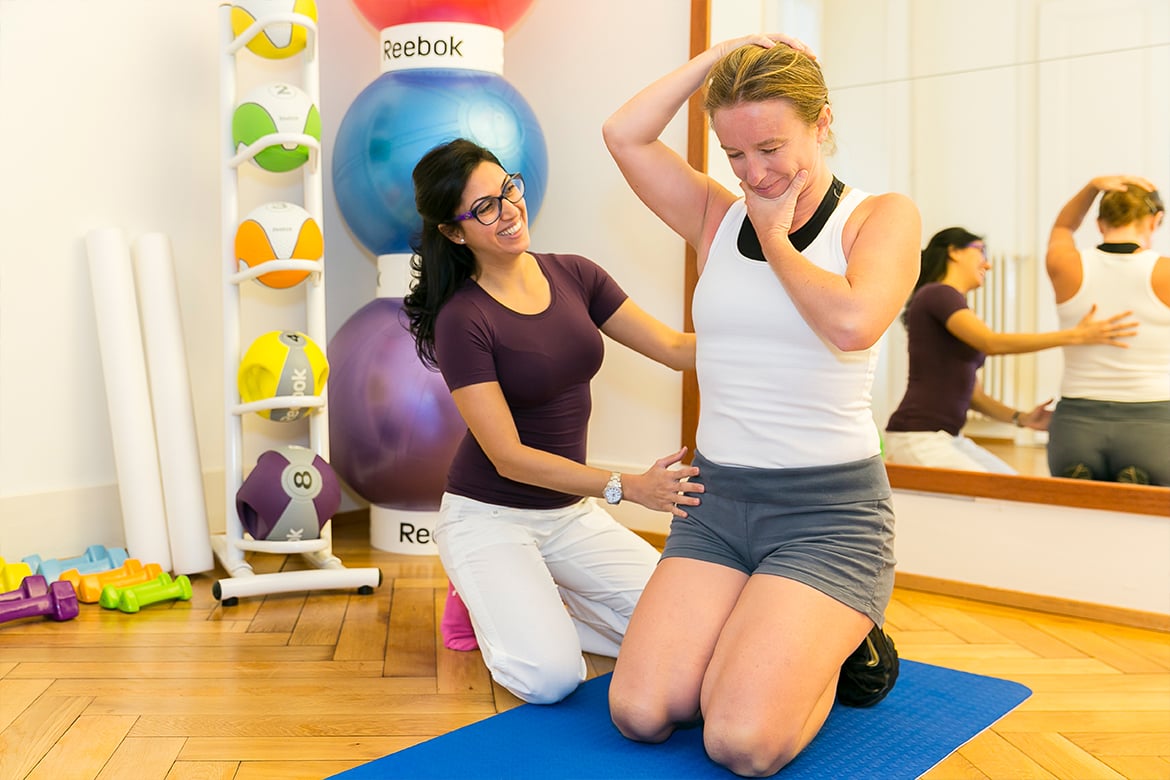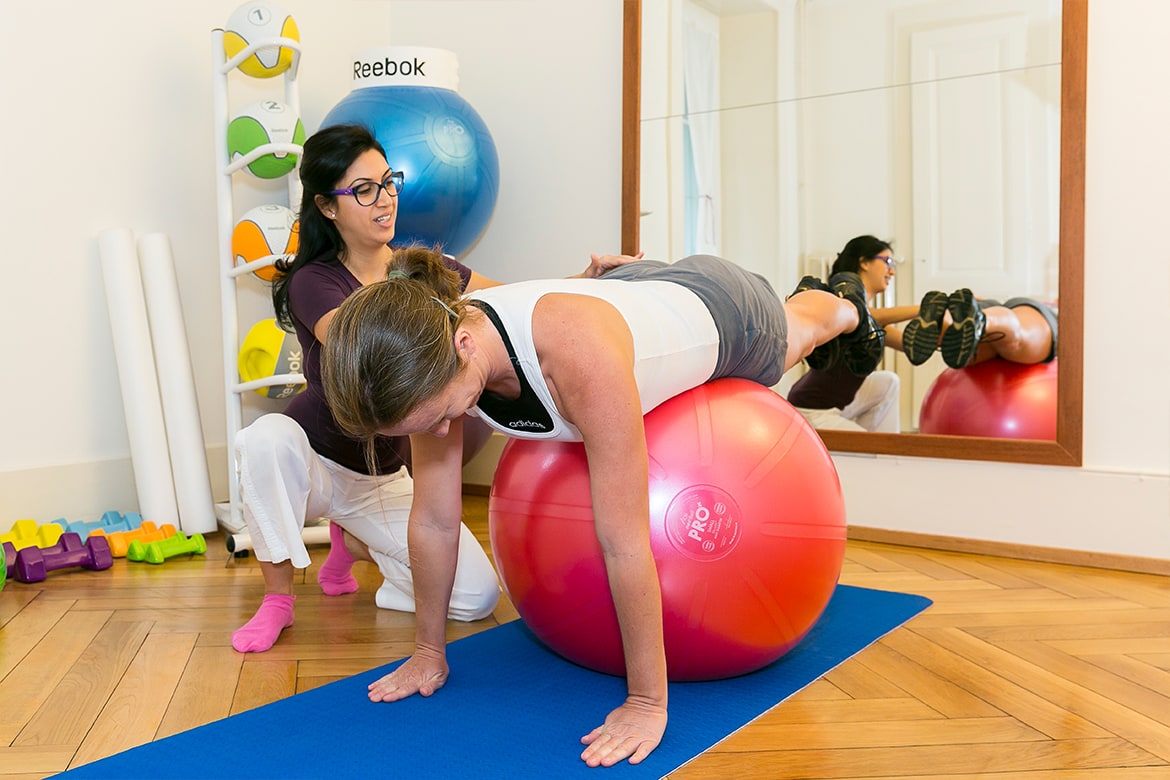Case study – Annabelle
Let’s now imagine Anabelle and understand the life of Anabelle, who suffers from a disc herniation 1 year after her second C-section.
Anabelle is a mother of 2 children aged 4 and 2. She is a manager at 50 % per week at a clothing boutique and the rest of the time she manages her home and is with her children. She does not like exercising, and after her two C-sections, she did not rebuild her pelvic floor muscles. At the boutique, she needs to shift heavy boxes at times and at home she often carries her 2 daughters. As a young girl, Anabelle was very sedentary, who loved reading and did not participate much in physical activities. She does not drink enough water daily, eats fast food when at work and is also often constipated.
She just turns 35, when she begins to have severe pain on the left side of her lower back. She takes pain killers for 2 weeks to continue her responsibilities. However, when she stops the pain killers, the pain gets worse.
She visits her general practitioner, who after clinical tests and an MRI, informs her of a disc herniation of L3-L4. He suggests sick leave from work for 2 months along with physiotherapy, followed by an exercise program to strengthen her pelvic floor muscles as well as a flexibility program. He also reassures her, that if she follows these measures, she will reduce or soon be out of pain and be able to have a normal life. But if she does not take her new routine seriously, the pain might get worse and may lead to surgery.






TREATMENT for Anabelle
Anabelle, does not wish to have surgery and would like to get back to her life with her family and work, both which she loves very much.
She therefore, follows her doctor’s recommendations. Takes off from work for 3 months. Starts 2 months of physiotherapy, 3 times a week, and her pain frequency reduces by 60% and intensity by 70%.
Upon the recommendation of her physiotherapist, she visits Mehernaaz to start her exercise program.
Mehernaaz recommends an all-round approach to treat Anabelle…
For her lower back
- After clinical orthopaedic tests and medical history, Mehernaaz prepares a tailor-made exercise program for Anabelle.
- The aim of the program is to strengthen ALL her weak muscles including the pelvic floor and stretch and mobilize the tight muscles, this is to bring balance in her muscles and to reduce pain and tension.
- Working with Anabelle’s musculoskeletal system as a whole, to bring better and long lasting results.
- Changing her program every 6 to 8 weeks, to get her stronger, more stable and flexible. An exercise program needs to be changed regularly, to advance step-by-step in the strength and mobility of the patient, to reduce pain and get best results.
- Anabelle needs to avoid carrying her 2 daughters and boxes at work for a few months, till her muscles get stronger and more balanced. However, there might be times where she might need to lift.
- Educating her on how to lift, push and pull objects when absolutely necessary for the moment. And when she is significantly stronger with less or no pain, she can lift, but with the suggestions given to her. This will avoid future injuries.
- She is advised to drink enough water as per her weight, height, activity levels and climate. Dehydration causes back pain – Discs between our vertebrae are shock absorbers that protect the spine from damage when we walk, run, jump and play. The two parts of a disc – outer shell and inner core – work together to absorb shock and support the spine. Throughout the day, the discs lose water and need to rehydrate. When we don’t drink enough water, the inner core of the disc shrinks, losing some of its shock absorbing capability. The outer shell then must shoulder more of the burden, causing an imbalance. When there is an imbalance in the partnership between the outer shell and the inner core of the disc it can lead to back pain and, potentially, wear and tear on the anatomy, and even a herniated disc.
- Constipation will not allow her core muscles to be well activated to support her back. Therefore, advice on improving constipation and replacing fast food with nutritious food is a very important aspect of her treatment. Anabelle can follow a very good exercise program, but if she continues to have constipation, her back pain will still exist and may get worse.
- She is also advised to not fear the pain, but continue her exercises regularly, follow the above points seriously to get back slowly to either a pain free back or reduced pain.
Main reasons for Back & Neck discomfort or pain
- Sitting, sitting and more sitting…
- Not enough or no mobilizing or stretching before and after a day of ski/snowboarding/trekking/walking or any other sport
- Lack of physical activity
- Poor postural habits while seated, standing or walking
- Starting fitness exercises without an appropriate or short warm up
- Ending an exercise class with an insufficient or no cool down
- Degeneration due to wear and tear
- Performing exercises incorrectly
- Sport injuries which have not been treated well
- Poor work stations and/or poor sitting habits
- La mauvaise ergonomie des postes de travail et/ou de mauvaises habitudes d’assise
- Sitting for prolonged periods of time without moving
- Mental stress
Conclusion
A tailor-made exercise program and lifestyle modifications, that’s all it takes to manage back pain and get back to a normal life.
